Bromeliad Pigmentation Patterns |
|
|
uniformis:
this is the simplest pigmentation in the leaves of Bromeliads, here the leaf is a single colour, most often green, but it can also include other pigmentations. Bromeliads with a uniform leaf colour can easily be over looked by collectors, but plants with these monochromatic relationships have their own refreshing qualities and in landscaping can often provide stable backgrounds to accent other more dramatic plants against.
While pigmentations in the leaf can appear uniform when viewed from above positioning the leaf to allow the light to transmit through it and afford a degree of translucency can reveal variations in the pigmentation. In the case of plants like Aechmea organensis, on closer examination the leaf often contains a range of subtle colour variations.
|
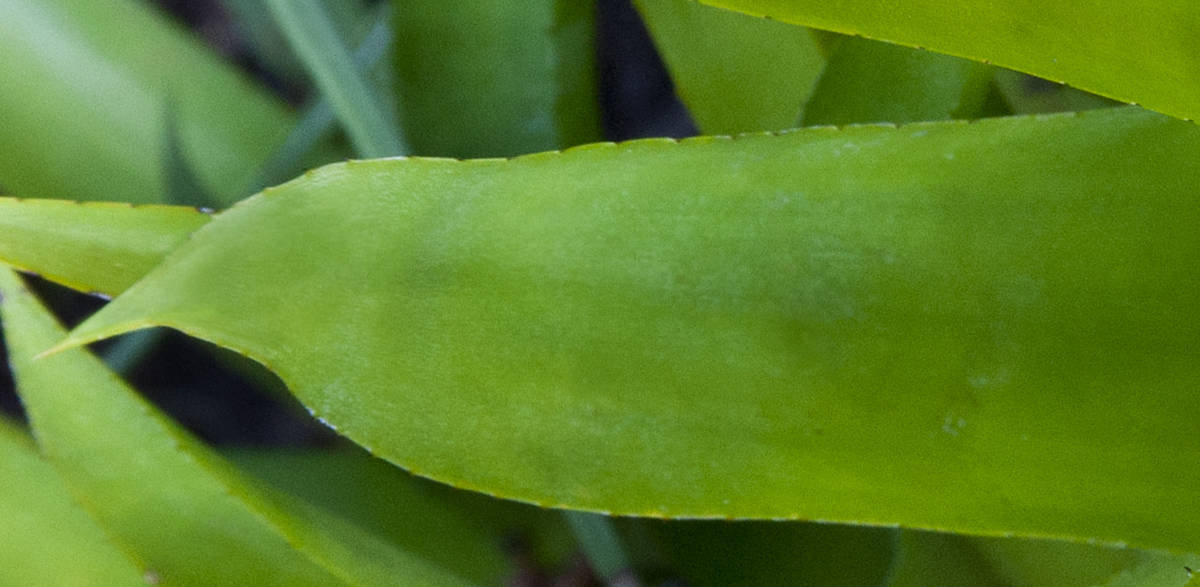
|

|
graduatus:
where the colour of the leaf gradually shifts from one colour to another. This happens can happen in Neoregelias. The gradual colour change can run up the length of the leaf, across the leaf, on the top or bottom surface. |
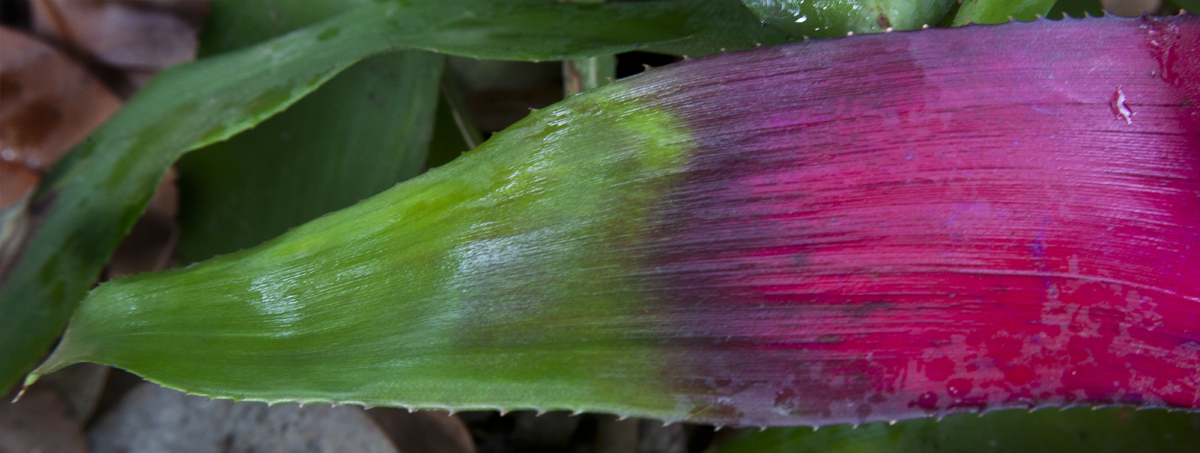
|
|
repens:
Abrupt sudden, in some Neoregeila leaves the pigmentation abruptly changes colour as in a hard line. |
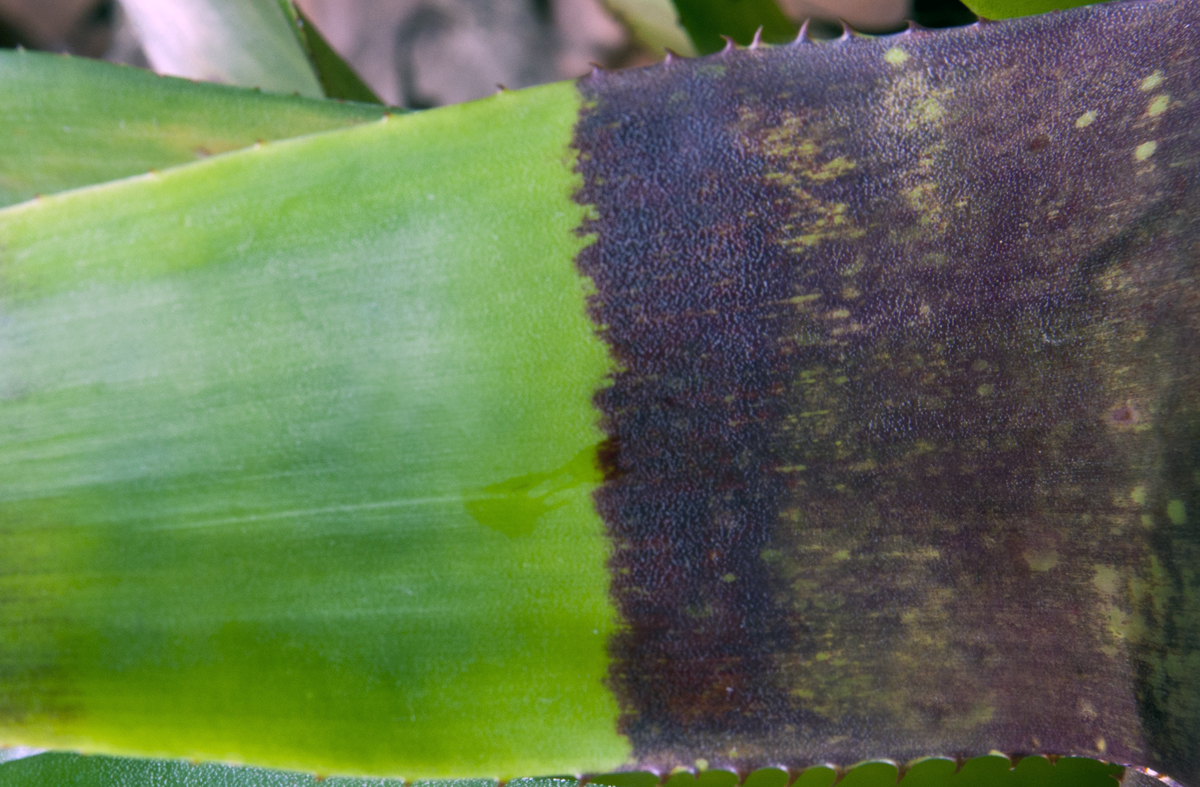
|
|
mucro:
sharp point, edge, dagger point, here the very tip of the leaf is a contrasting colour nearly always redder or darker. Some Neoregeilias produce strong examples of a bright red maroon pigmentation against the over all green of the leaf, while other plants like Neoregelia noble descent with mixed red green pigmentation produce a band of green near the end which is punctuated with the red tip.
The effect can be a dramatic sharp contrast or as in the tips of some plants like Vriesea fosteriana x platynema where a gradual darkening at the tip occurs. Other plants with this trait - Neoregelia gee whiz,
|
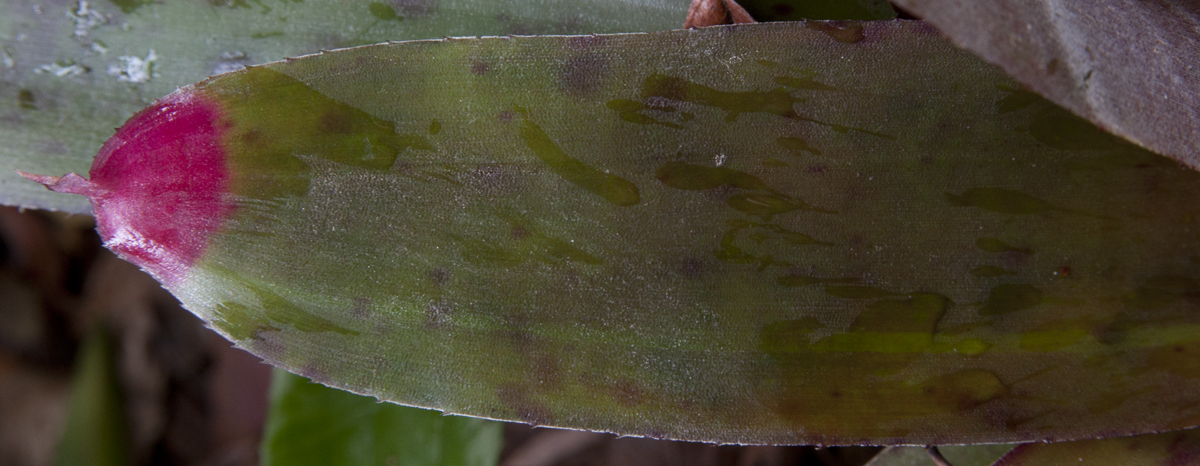 |
|
pessum:
to the ground, to the bottom, downward, the bottom or base of the leaf on the underside of the leaf. Because of the rosette shape of many plants this often not visible from above as it faces outwards
|
|
|
variegata:
Irregularly colored or blotched; but in Bromeliaceae variegata is generally accepted as longitudinally striped. In Bromeliads, there are so many variations of this pigmentation that it has been broken down into more specific terms, so that Variegated or variegata means the leaf edge is green or a darker cfolour and the middle area white or yellow. Variegata occurs in Aechmea, Alcantarea, Billbergia, Neoregelia, Vriesea. Some plants can produce this effect over the entire plant, or on only a few leaves where there are multiple lighter pigmentation strips. |
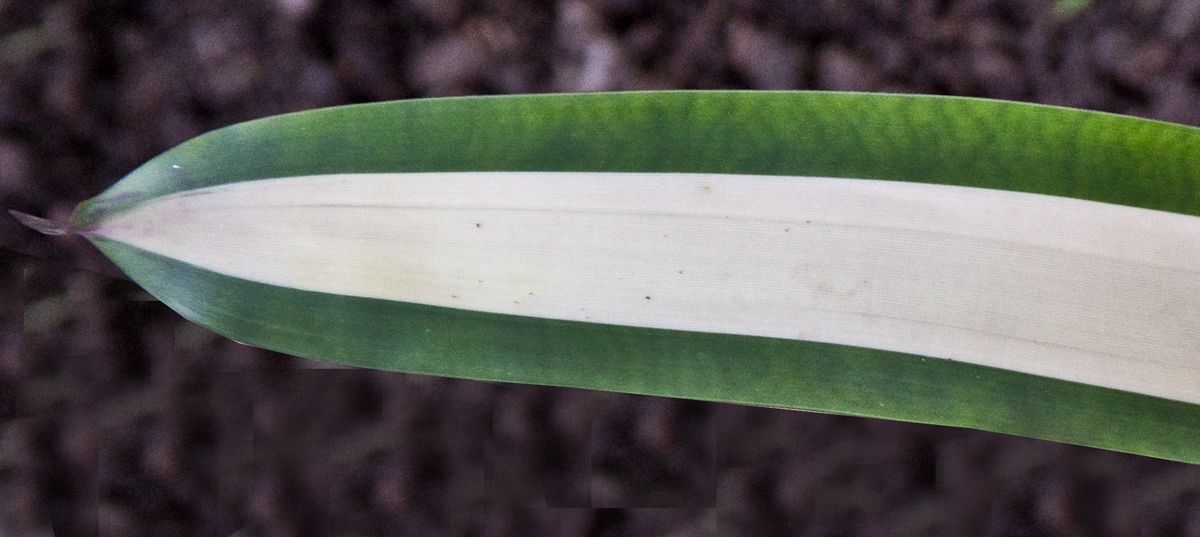
|
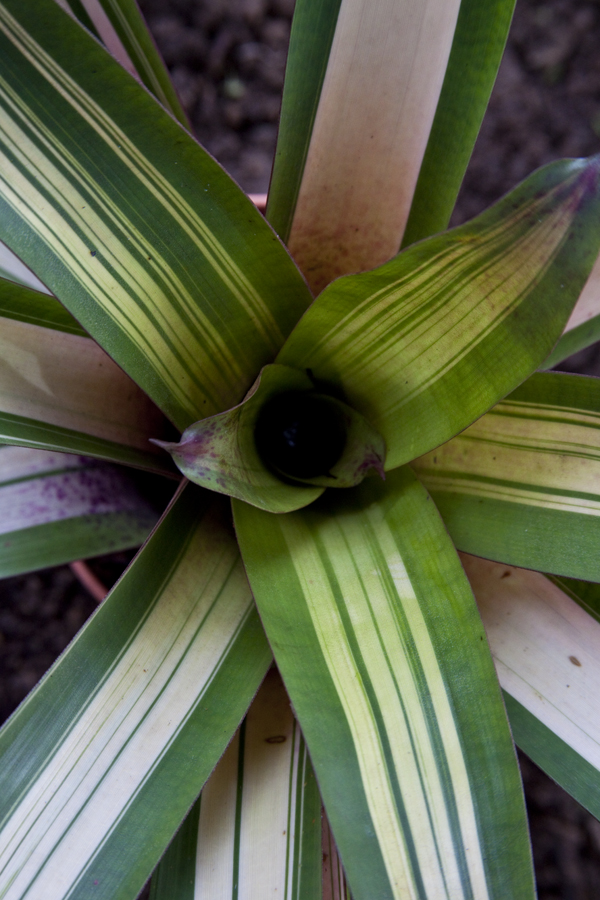
|
marginata:
is a form of Variegation usually albo-marginata, meaning the white or lighter colour is at the edge of the leaf, while the central leaf zone remains solid green or a darker colour. |
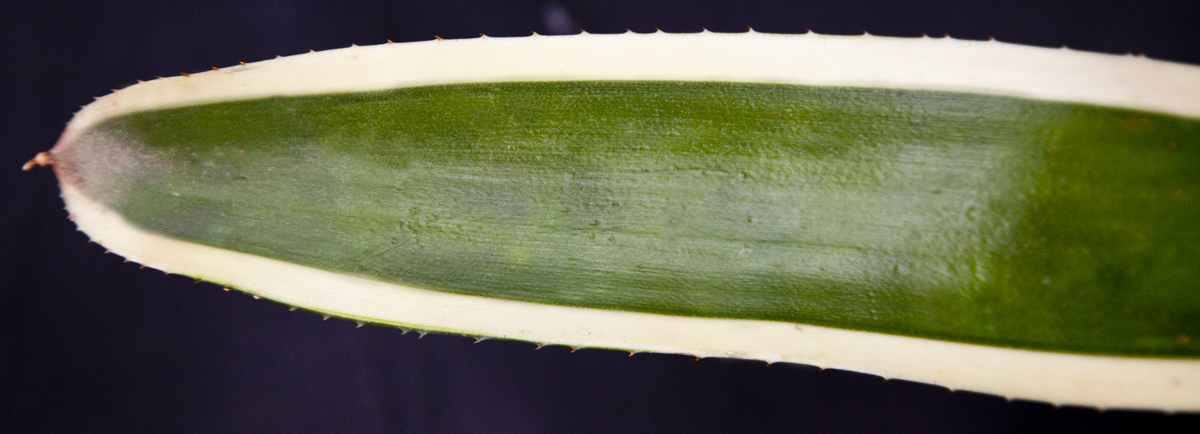
|
|
striata:
A form of variegation - striped; marked with longitudinal lines, where the foliage is green overlaid with longitudinal white or yellow stripes of varying widths. |
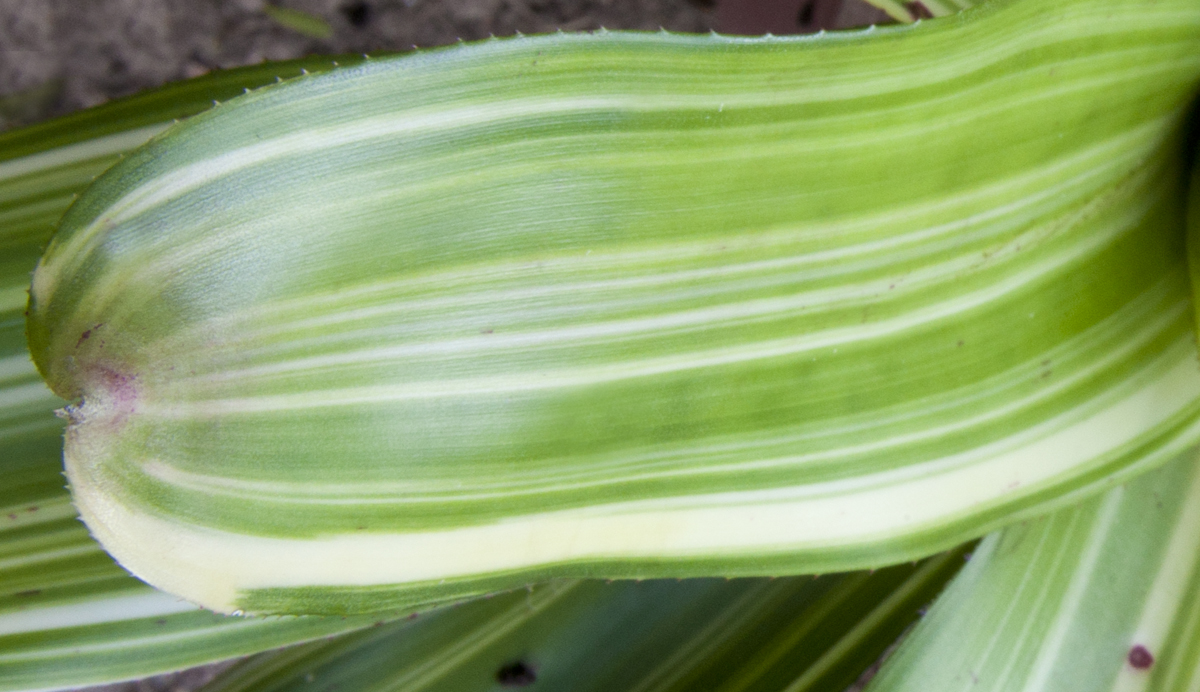
|

|
lineata:
a form of Variegation with thin lines or stripes.
|
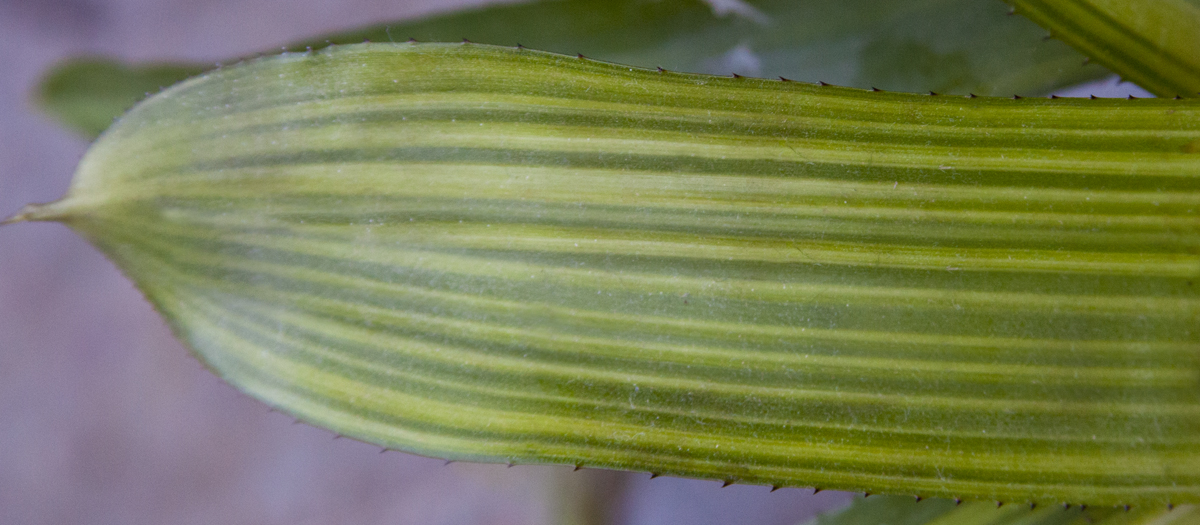
|
|
paxianum:
With green leaf margins and a single , broad white strip
|
|
|
bivittatus:
a form of variegation where the leaf is doubly striped lengthwise |
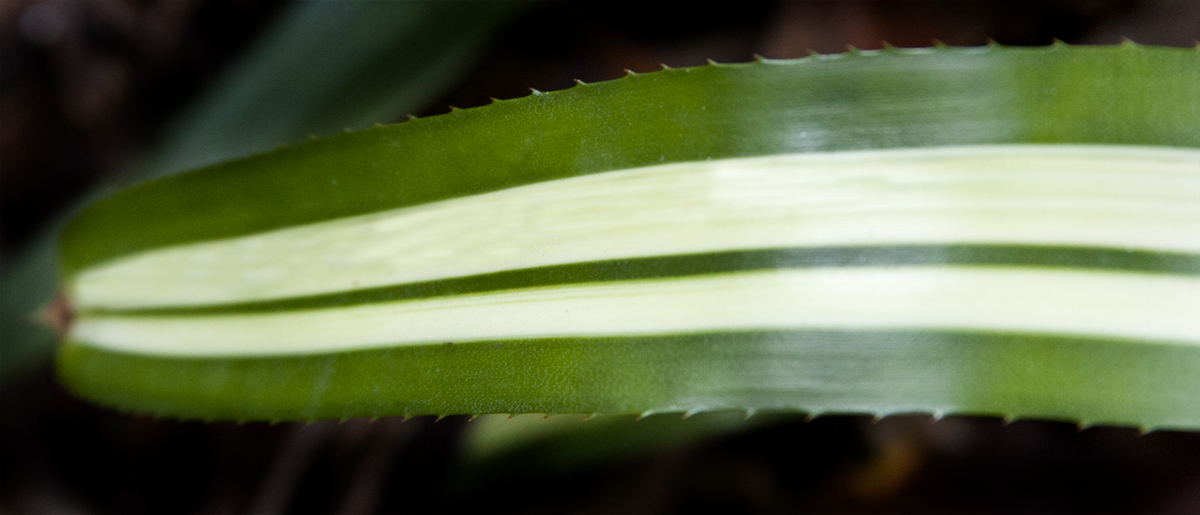
|
|
unum aciem tenuem:
a form of variegation with a single thin line or a series of thin lines in the centre. |
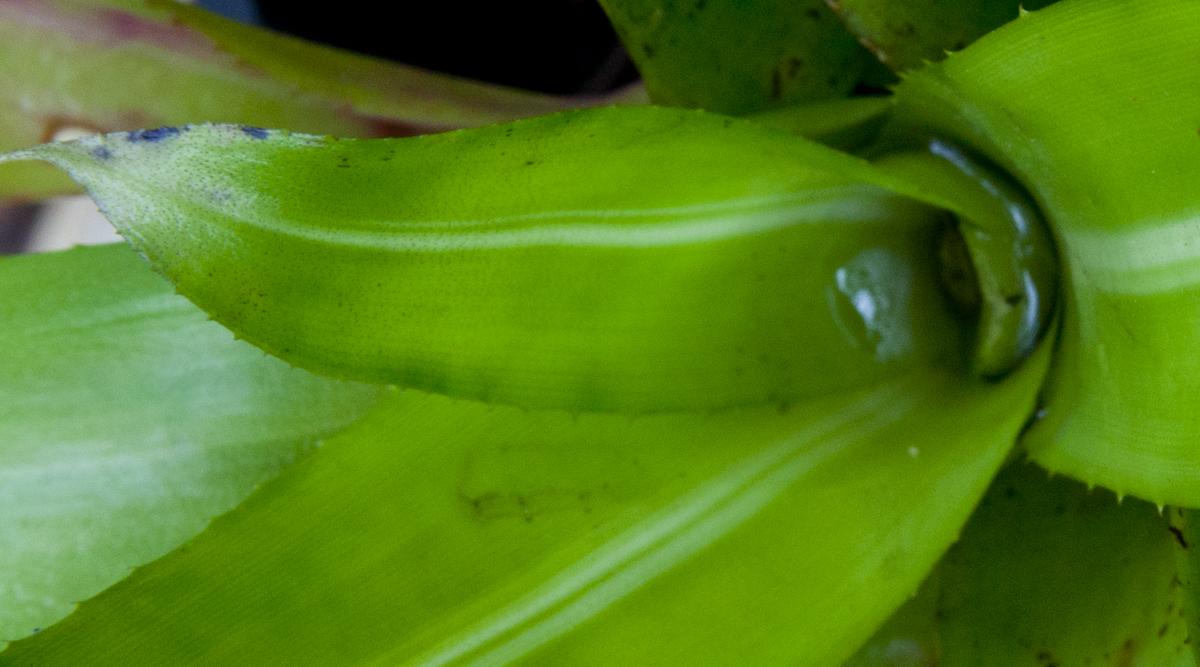
|
|
plagis vermiculus:
a form of variegation with red or crimson stripes running down the length of the leaf. |
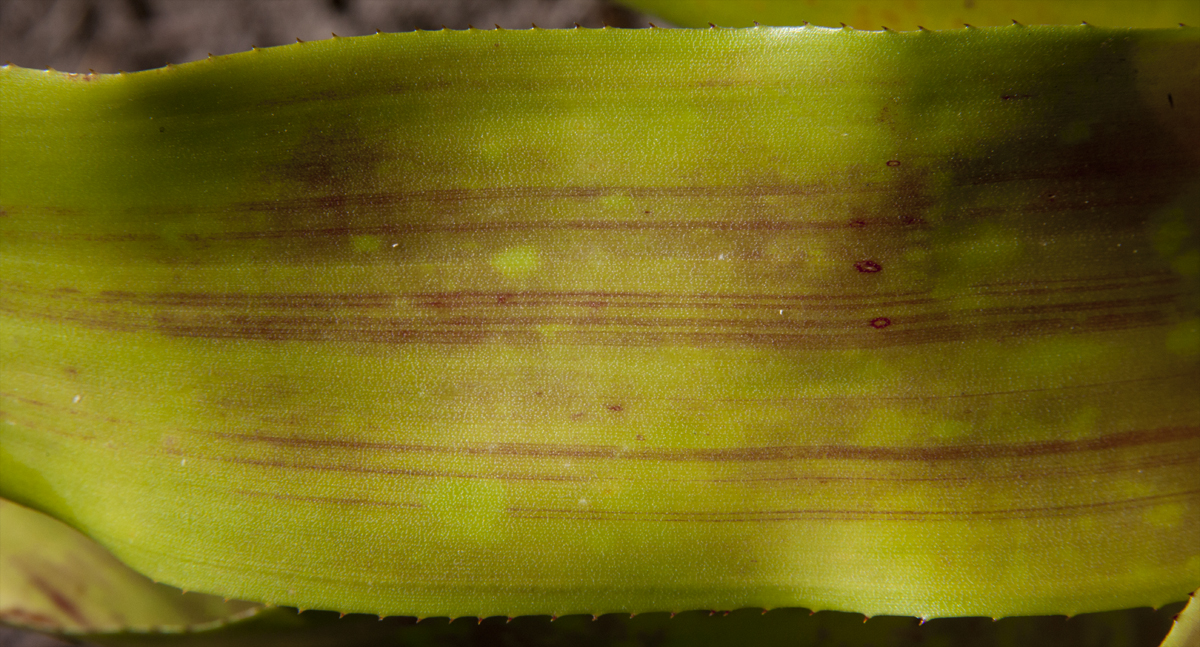
|
|
Fimbriae:
fringe, edge, extremity, border - as in this leaf with a green edge - the Anthocyanins (red pigments) are formed in the center with a distinct green edging that runs up the length of the leaf. |
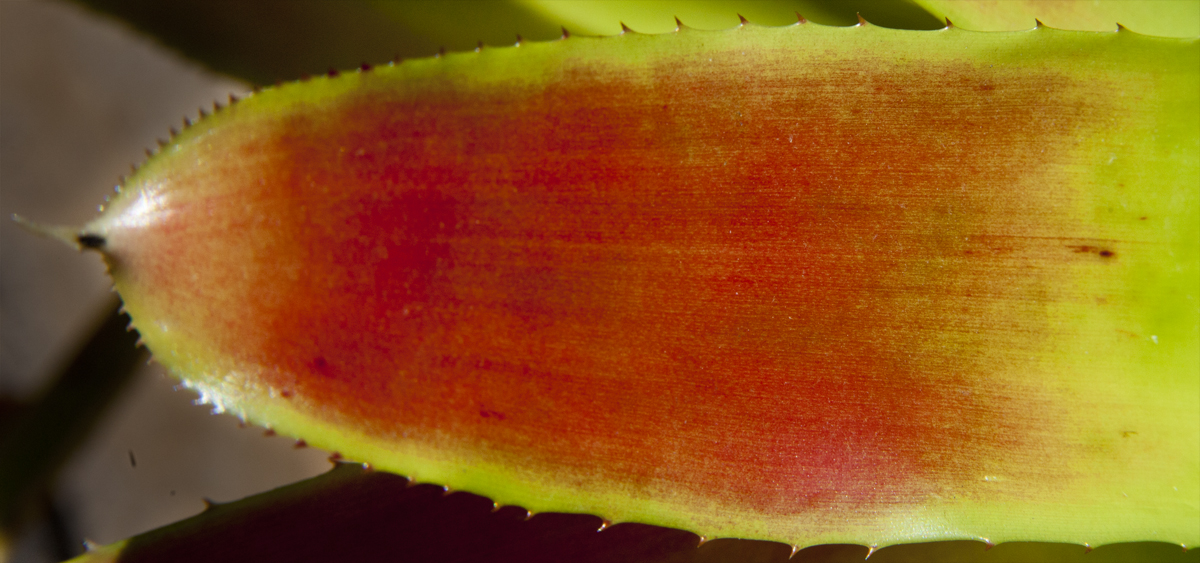
|
|
tricolor:
a form of variegation with three colours usually green, cream and pink |
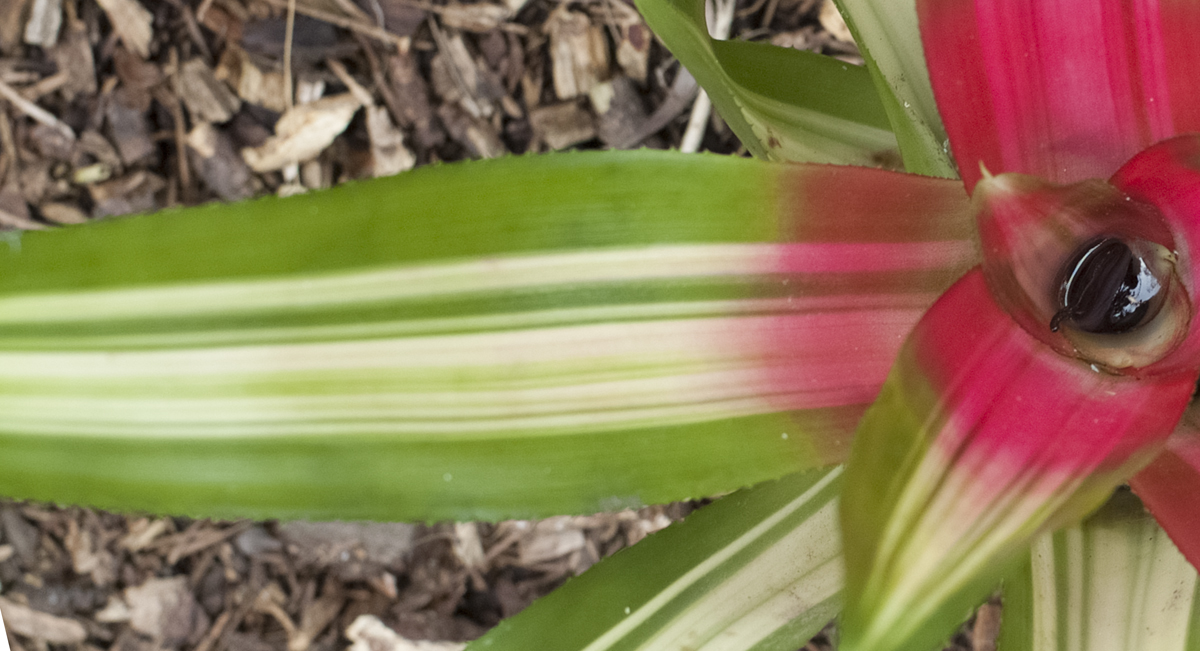 |
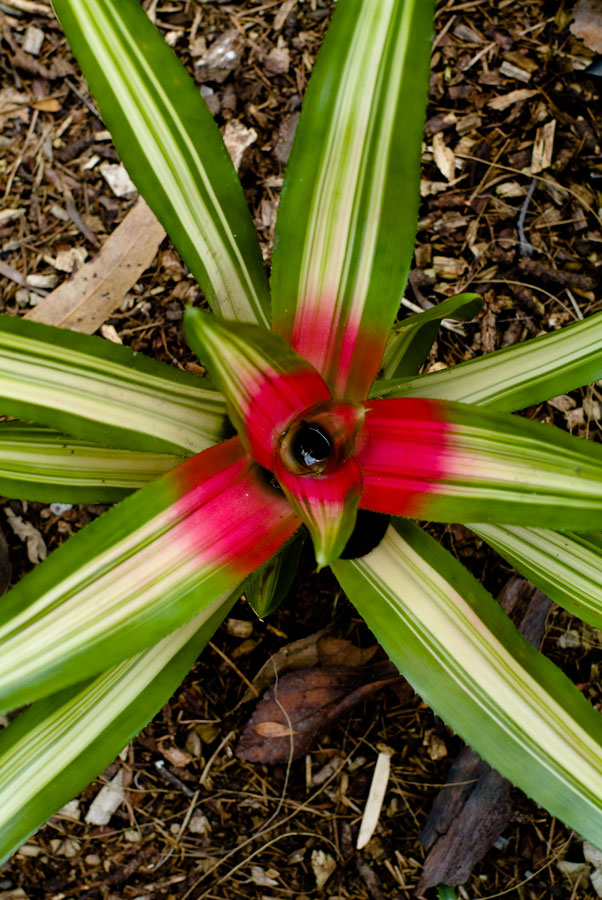 |
quadricolor:
Four (quadricolor = four-colored.
|
|
|
marmoration:
variegated with a superimposed swirled pattern of one colour on another so as to resemble the patterns one might see in marble formations.
Marble is a metamorphic rock that forms when limestone is subjected to the heat and pressure of metamorphism and while it can be of one colour, it can also present in amazing color patterns. The variety of colours exhibited by marble are a consequence of minor amounts of impurities being incorporated with the calcite during metamorphism and this is referenced in the name. While in visual arts hand made marbled paper was often used as part of the inside covers of a book, artists like Robert Wu, have used the print making technique in more creative ways. As Wu’s “Phoenix Rising” suggests the swirled ink patterns are similar to those found in some marble deposits, and the leaves of some Bromelids like Neoregelia Marmorata. |

|
|
concentric:
with intensification of color in the center of the plant as in Neoregelia concentrica. Many Neoregeilas produce vivid colour in the centre |
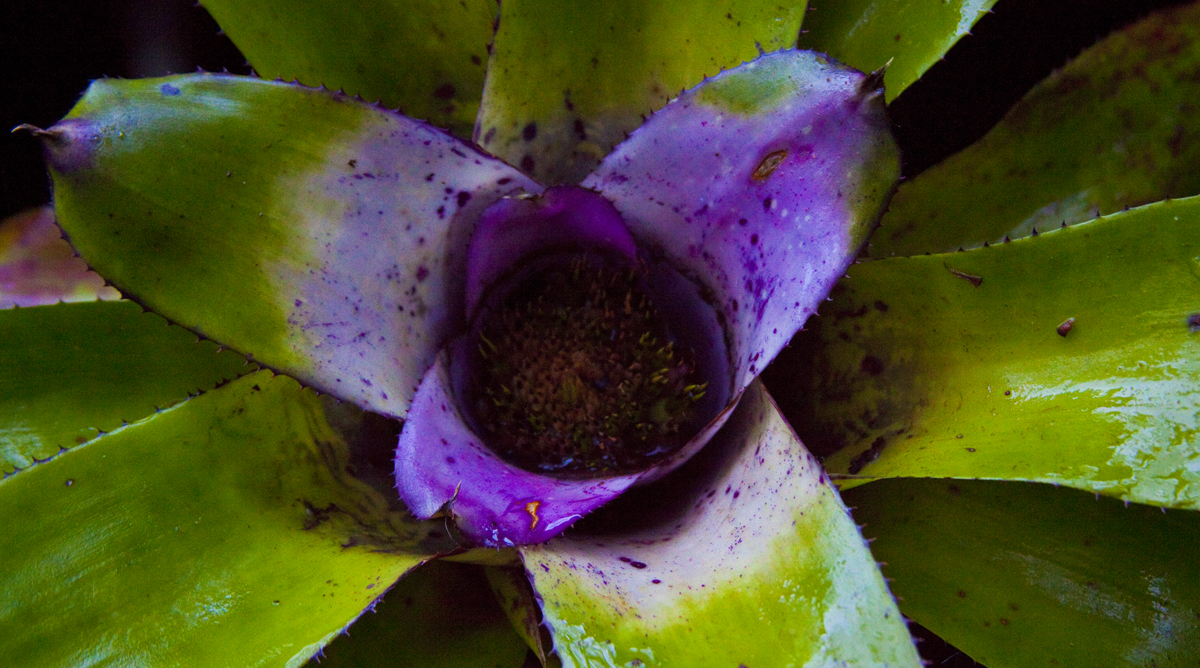
|
|
maculation:
Spotted; blotched; marked with spots. The markings or figures are red spots of blotches on a green ground, which is usually more predominant in the center of the plant. This patterning is obvious in many Neoregelias. |
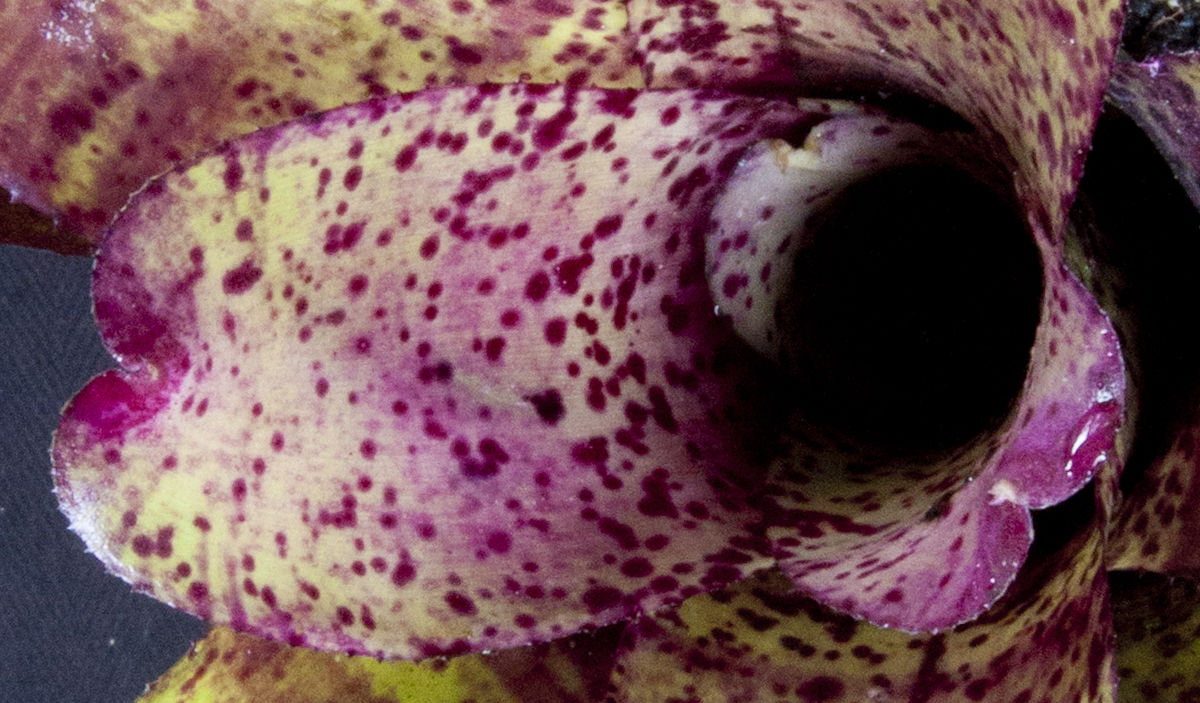
|
|
maculation reversed:
Spotted; blotched; marked with spots. The markings or figures are green spots of blotches on a red ground which is usually more predominant in the center of the plant |
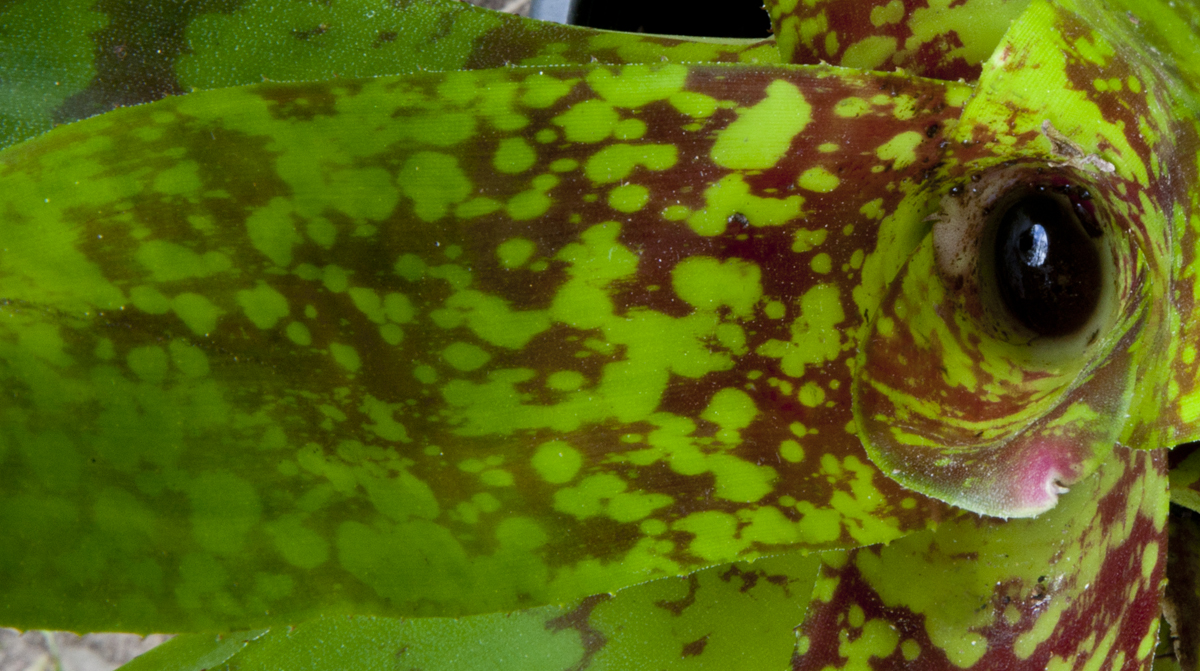
|
|
fenestralis:
With window-like openings; referring to the light-green rectangular areas on leaves which give the illusion of windows. Many hybrid Vrieseas produce some amazing fenestralis patterns. These patterns do not run as even pigmentation gaps across the leaf buy more as broken zigzag lines much like the optical patterns in some of Bridged Riley’s Op Art works. The translucent nature of some leaves bring to mind the stunning colour patterns of Chihuly’s open bowl glass works. |
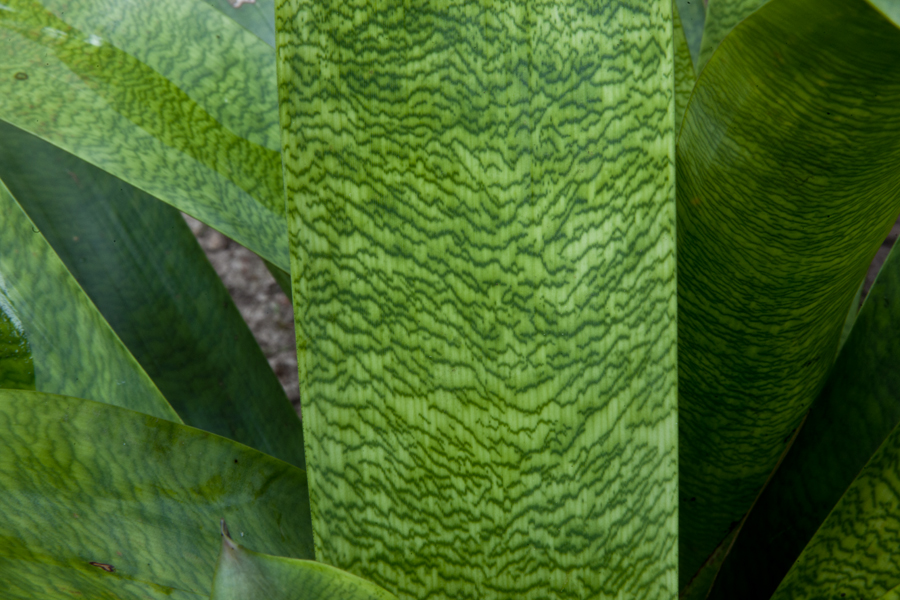
|

|
Iacio:
to throw, cast, hurl, lay, scatter, diffuse, here the contrasting pigmentation is scattered randomly across the leaf. So rather than show as a series of spots, dots or blotches it shows as larger splashes which appear to have been scattered across the leaf like spilled ink. |

|
|
Zonation:
zonata -Zoned; banded with distinct colors. Here the contrasting pigment bands runs across the leaf which when these bands line up with adjacent leaves gives the entire plant the look of a stunning series of circles. |

|
|
coloir agro:
|
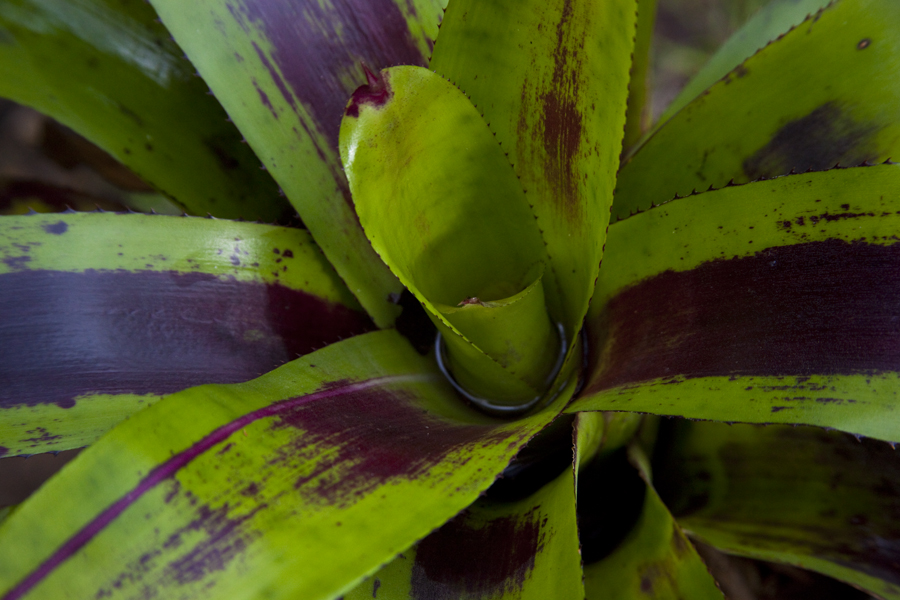
|
|
Intus:
Inside - this references the inside surface of the leaf facing inwards - in Neoregelias it is the most visible aspect of the leaf, while in the tube forms like Billbergias and Quesnelia marmorata it is concealed by the tight form of the tight tube structure
|
|
|
Extrinsecus:
outside - this is the surface of the leaf facing outwards - in Billberiags it is the most obvious leaf surface. In mature Neoregelias with spreading flat form, it is the leaf surface facing downward is less visible. |
|
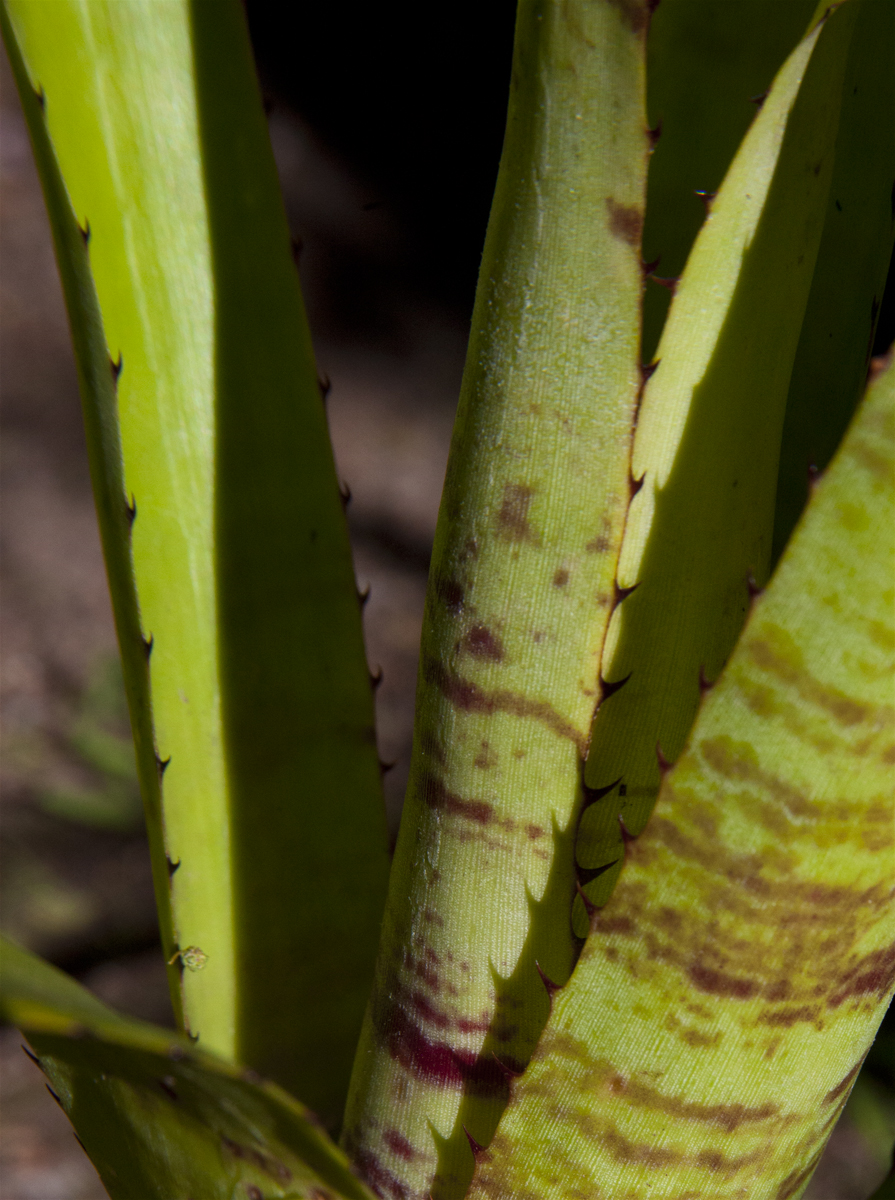 |
In some plants the pigmentation from Extrinsecus to Intus is partial or with a different pattern. In the leaf of this Achmea the pronounced pigmentation is on the underside of the leaf - Extrinsecus, while the pattern on the upper side - Intus is less pronounced.
|
|
|
Bromeliad Trichome Patterns |
|
|
All Bromeliads have trichiomes which are the tiny sliver white cells that are able to take moisture and nutrients into the plant. Trichomes on the leaves of Bromeliads vary a great deal across species.
On some plants they can be arranged flat on the surface and are invisible to the naked eye, on other plants they can cover an entire leaf with an even pattern of long hair like cells that sit up. On some plants the trichomes are arranged in bold patterns, often strong bands across the leaf contrasting white silver colour against the leaf pigment.
When the complexities of trichome patterns are over laid on top of the huge array of pigment patterns of Bromeliads, the potential visual patterns of Bromeliads are expanded even further. Where as pigments are embedded as part of the flat leaf surface, trichomes are actually three dimensional and sit above the leaf surface. In some plants, the depth of the trichome can be enough to give the leaf a texture, where the direction of light creates a dramatic contrast of light and shadow. Another aspect is the thickness of the trichomes, which can act as an opaque layer over the pigment or create varying degrees of transparency.
|
 |
|
| Trichome patterns on Bromeliads are most often pronounced on the underside of the leaf, so in tall tubular forms like Billbergia, where the underside of the leaf faces outward, the pattern becomes highly visible. Where as with vase forms, like Neoregelia the trichomes are often on the under side of the leaf surface and because this surface faces downward, they are less visible from above. |
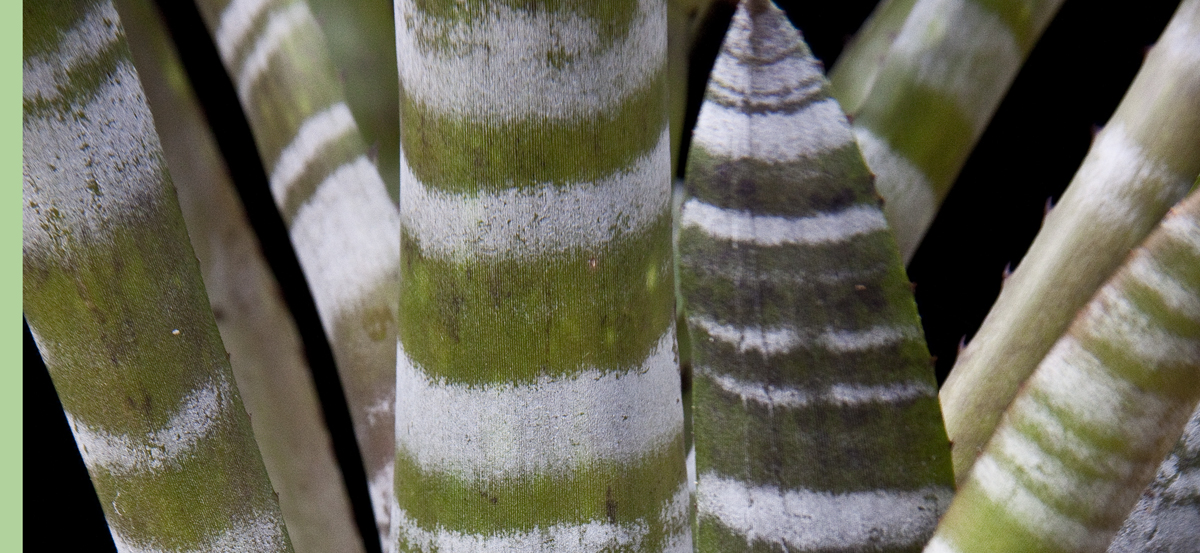 Banded trichome pattern on Billbergia vatatta Banded trichome pattern on Billbergia vatatta |
|
| On some species like Aechmea fasciata the silver trichome cells are often so heavily dusted over the entire leaf surface that they flake off. |

|
|
| In this plant Aechmea nudicaulis aequalis, the trichome banding is regular and finely spaced. |

|
|
However there are some plants like Alcantarea where a fined dusting of trichomes is present on the upper leaf surface.
|
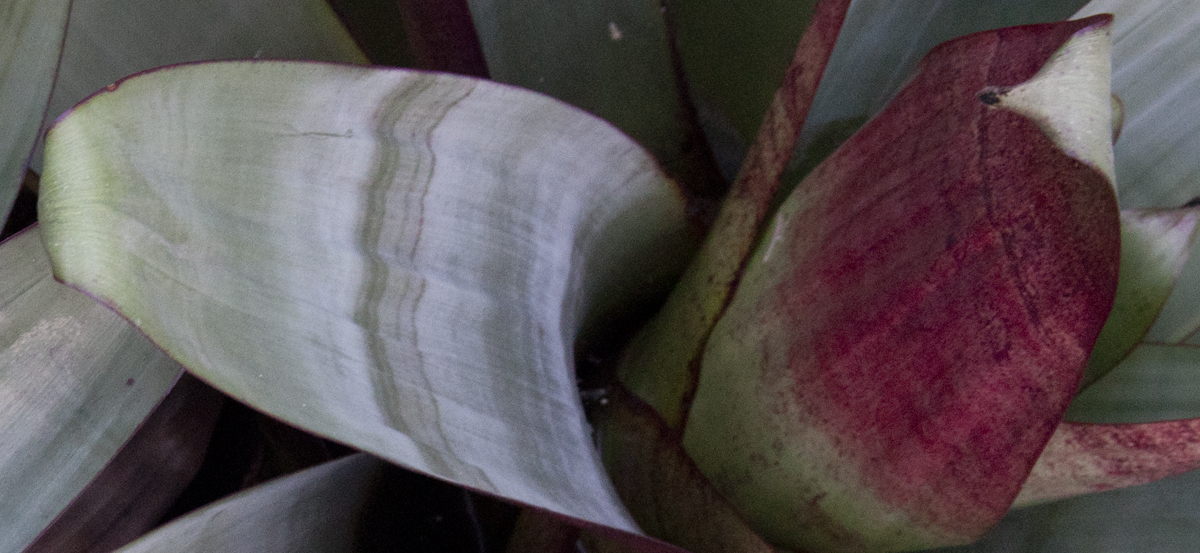
|
|
| On this Quesnelia marmorata the pattern is created by small horizontal breakes across the leaf in an over trichome cover |
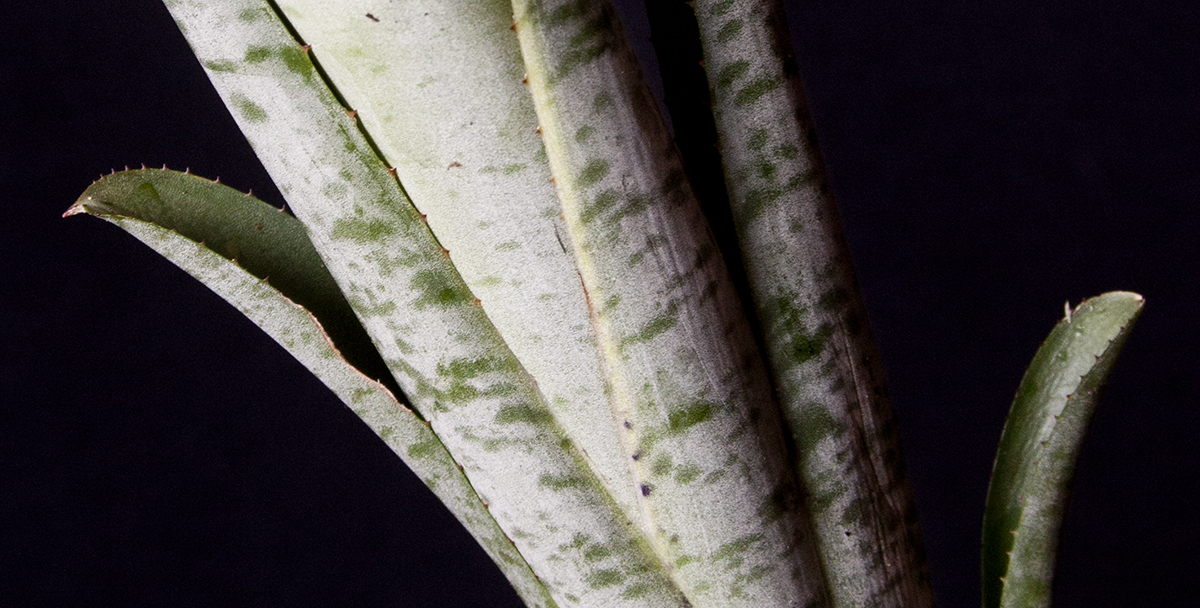 |
 |
| on this Quesnelia testudo Variagated the difference between the trichome covering on the upper and lower side of the leaf can be seen. |
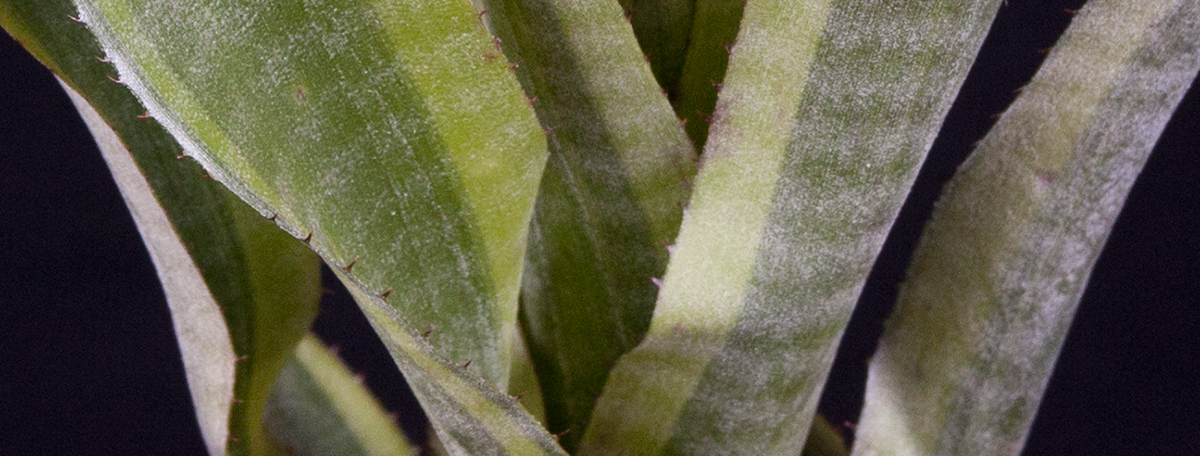 |
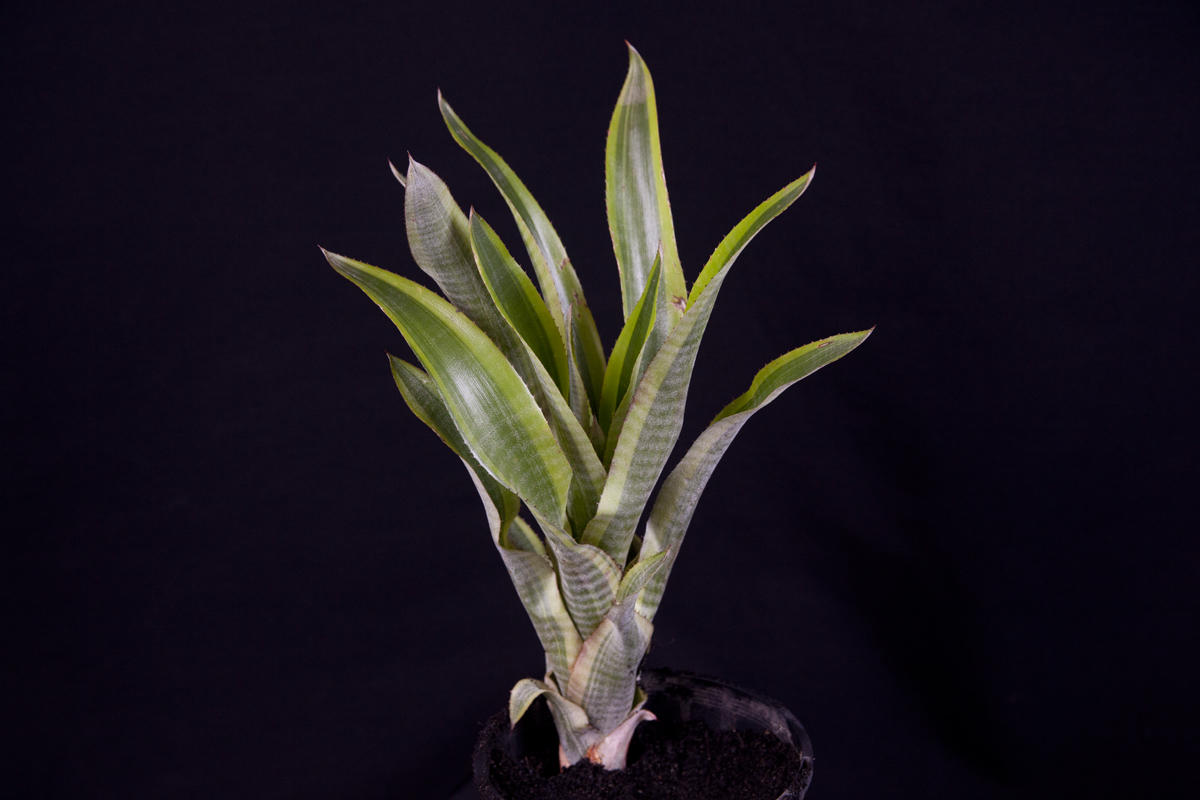 |
| The upper surface of Crypthansus can produce fantasic zig zag trichome patterns. |
 |
|
| the longitudinal trichome pattern on the underside of this Dyckia are created by a raised rib from the plant tissue below. Note how the pressure of the lower leaf has left an impression of the spines on the leaf. |

|
|
| Even trichome pigment spacing - as in the leaf of Aechmea chantinii |

|
|
| Of course Tillandsias have profuse trichomes coatings on both sides of the leaves and no pattern. |
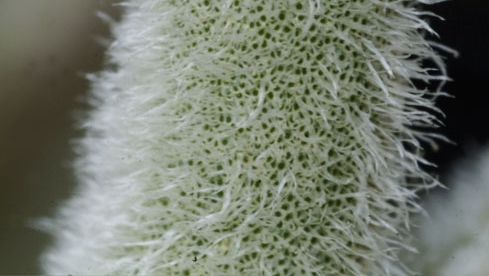 |
|